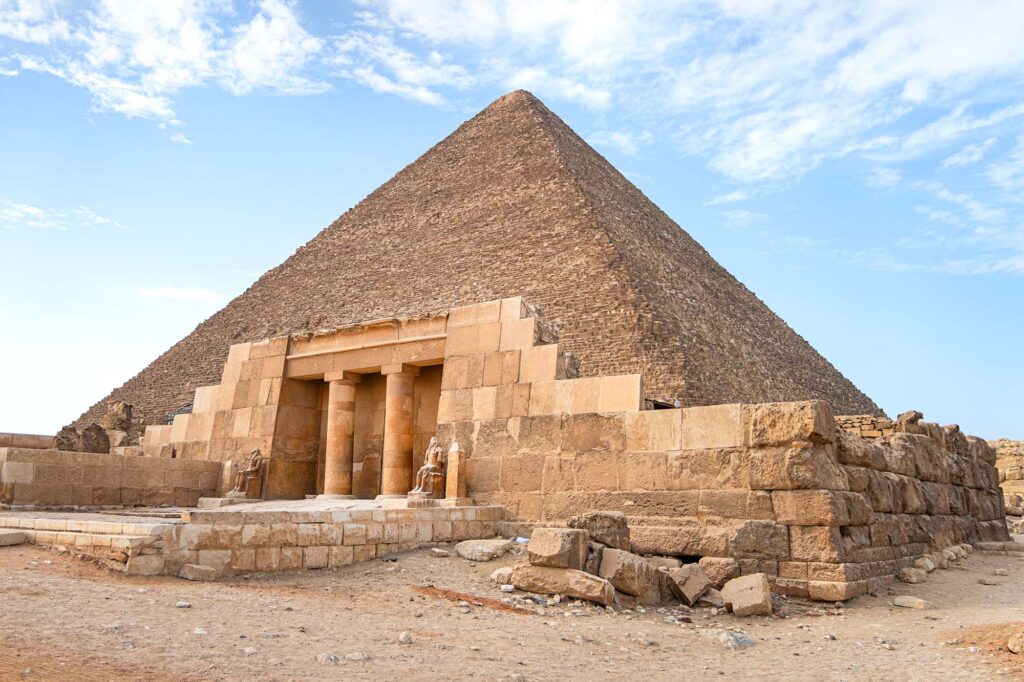- US team may have solved riddle of how stone was transported to site in Giza
- Scientists – and others – have spent decades speculating on how stone arrived
- Pyramids were built more than 3,500 years ago

For many years, the Pyramids of Giza have inspired awe and wonder in those that have seen them. They also pose many questions, including how the stone used to build them was brought there.
There have been many theories as to how the movement of such a large amount of stone was achieved. Some have speculated it was achieved through slave labor – but slaves were not used.
Other theories are more left-field – some have speculated that it was aliens who built the pyramids. If you look in dark corners of the internet (not recommended) you can still find this theory in the wild. But there isn’t a shred of evidence for that either.
Also explore Modern projects like Musk’s Starship rockets, planned to be bigger than the Pyramids.
But now scientists believe they have the answer and, as usual, the truth is slightly more prosaic: the stones were brought there via water – specifically a branch of the Nile that has long since dried up.
A team led by Eman Ghoneim, University of North Carolina Wilmington earth and ocean sciences professor, has discovered the pyramids in Egypt were built along a now abandoned branch of the Nile River.
These findings are reported in a research paper in Communications Earth & Environment and could explain why the pyramids are concentrated in what is now a narrow, inhospitable strip of the Saharan Desert.
“Many of us who are interested in ancient Egypt are aware that the Egyptians must have used a waterway to build their enormous monuments, like the pyramids and valley temples, but nobody was certain of the location, the shape, the size, or proximity of this mega waterway to the actual pyramids site,” said Ghoneim. “Our research offers the first map of one of the main ancient branches of the Nile at such a large scale and links it with the largest pyramid fields of Egypt.”
Just as the Pyramids of Giza captivate us, Kentucky scientists aim to attract alien tourists with their interstellar advert.
The Egyptian pyramid fields between Giza and Lisht were built over a 1,000-year period starting about 4,700 years ago. They now sit on the edge of the inhospitable Western Desert within the Saharan Desert. Sedimentary evidence suggests the Nile used to have a much higher discharge, with the river splitting into several branches in places. Researchers have previously speculated that one of these branches may have flowed by the pyramid fields, but this has not been confirmed.
Ghoneim and her colleagues studied satellite imagery, geophysical surveys and sediment samples to confirm the location of the former river branch; which they propose naming Ahramat, meaning pyramids in Arabic. The researchers suggest an increased build-up of windblown sand, linked to a major drought that began about 4,200 years ago, could be one of the reasons for the branch’s migration east and eventual silting up.
The discovery may explain why these pyramid fields were concentrated along this strip of desert, as they would have been easily accessible via the river branch at the time they were built. Additionally, Ghoneim and her colleagues found many of the pyramids had causeways that ended at the proposed riverbanks of the Ahramat branch, which they suggest is evidence the river was used for transporting construction materials.